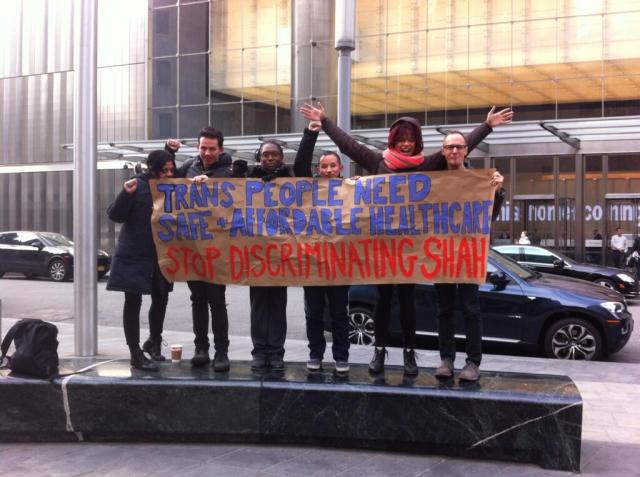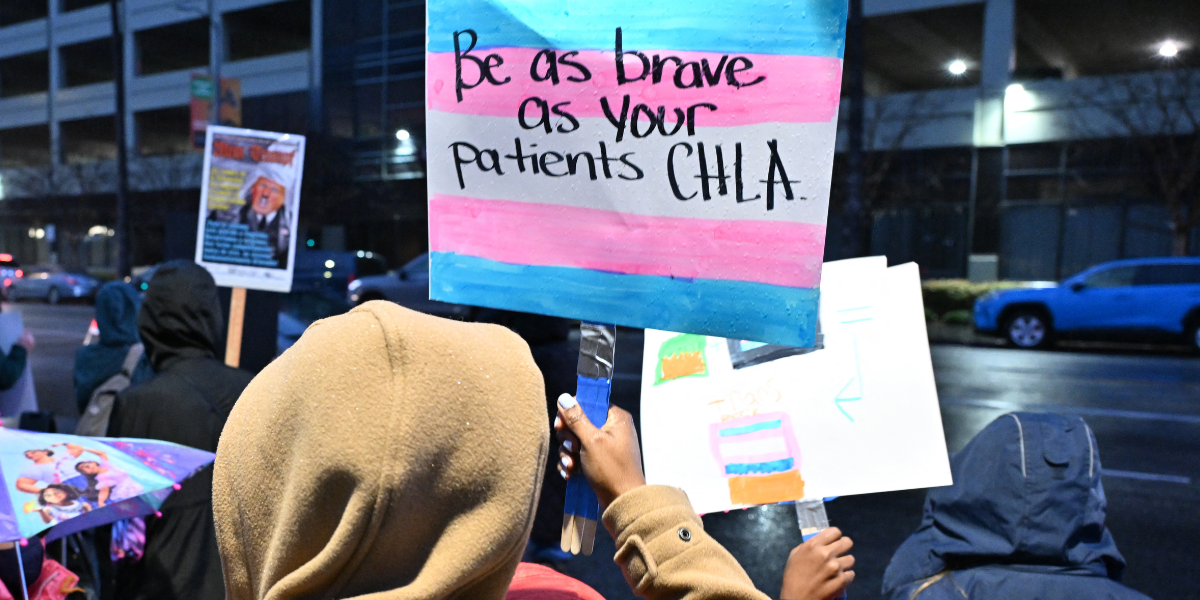A coalition of New York State Organizations scored a major victory this week when Governor Andrew Cuomo and the NY Department of Health announced that Medicaid would begin covering transgender healthcare, removing a 1998 regulation that had barred Medicaid coverage of hormone replacement therapy and gender affirming surgery for trans people.
Medicaid, the state-run program which helps low-income people cover costs of medical care, is critical for trans people, and especially trans women. This is particularly important for trans people (and again, especially trans women) of color, who are disproportionately likely to be living in poverty and unable to pay out of pocket for gender-affirming healthcare treatments.
The Sylvia Rivera Law Project (SRLP) has been part of this campaign since it opened in 2002, alongside various other groups organizing around transgender issues in New York. Elana Redfield, director of SRLP’s Survival and Self-Determination Project, spoke with me about the campaign and its impact on transgender New Yorkers. “Because of how deeply healthcare is related to all aspects of our lives,” she said. “We see [organizing around healthcare] popping up everywhere that transgender people are organizing.”
“People currently navigating oppression are powerful and capable of changing the world (and winning campaigns), because we’re brilliant strategists, and have first hand insight into what the obstacles to change are, who we can bring into our cause, and ultimately how to make transformation irresistible.” – Reina Gossett
The announcement comes just one week after Governor Cuomo announced that private insurance companies would be required to cover trans healthcare. Earlier this year, the Federal Department of Health and Human Services determined that Medicare will not automatically reject claims for coverage of gender affirming surgeries.
The treatments included are quite comprehensive, ranging from hormone replacement therapy to gender affirming surgery. The governor’s office said that in order to qualify, “Referring medical professionals will have to document that a patient has persistent gender dysphoria, has received appropriate hormone therapy a minimum of one year, has lived a minimum of one year in the gender role consistent with the person’s gender identity and has received mental health counseling.” Medicaid will not cover treatments for people under 18 or 21, depending on the circumstances. Redfield explained why this is not ideal:
“[The issue of healthcare for young trans people] is tricky because a lot of factors come into play, including protocols of medical providers. Some will recommend only hormone blockers, others will recommend more comprehensive treatments. However, early intervention is very powerful, especially the ability to delay onset of puberty and secondary sex characteristics, and all young trans people and families of young trans people should have the option.
There is also some ambiguity around the extent to which procedures that are considered “cosmetic,” because while the regulation excludes specific cosmetic procedures, it also defines cosmetic in such a way that could be interpreted differently according to an individual’s medical needs. Surgeries that might sometimes be considered “cosmetic” are critical in comprehensive healthcare for trans people. Redfield said, “I can’t tell you how critical [facial surgery] is, how many clients of mine get facial surgeries and how it changes their lives.” She continued,
“Trans advocates have been chipping away at the “cosmetic” idea all along but I think it’s going to be a big part of our next steps. Things that help us affirm ourselves are not cosmetic, and should be defined by the individual themselves. If you ask me. Or the dozens of medical experts who have documented the impact of facial surgeries on self esteem and quality of life.”
Redfield noted that working towards ensuring coverage for people under 18 and for facial and hair removal surgery will likely be central to advocacy around trans healthcare in New York moving forward.

This victory comes after a sixteen-year campaign, since the discriminatory regulation was enacted in 1998.
“The impact was quick and deep,” wrote Redfield in a statement on SRLP’s website. “Many trans people on Medicaid lost hormones and started being denied surgeries they could previously get, which made people very quickly aware of the impact of the regulation,” she said later in an email.
A wide coalition of organizations have worked together on the campaign over the years. Together, they have pressured the New York State Department of Health through direct action, petitions, law suits and media campaigns, drawing inspiration from Basic Rights Oregon, TransJustice at the Audre Lorde Project, a campaign at Critical Resistance to stop the building of a jail in the South Bronx and activism around AIDS.
Reina Gossett, SRLP member and former membership director, spent several years coordinating the campaign at SRLP, spoke to why these campaigns were successful:
“These campaigns had the shared principle of centering the leadership of those impacted by the issues at hand, whether a jail or the denial of benefits or healthcare. I believe they were all successful, not only because people currently navigating oppression are powerful and capable of changing the world (and winning campaigns), but because we’re brilliant strategists, and have first hand insight into what the obstacles to change are, who we can bring into our cause, and ultimately how to make transformation irresistible.”
Led by those affected by the old regulation, this year members of SRLP took the stage at the HxRefractored Conference in New York City while the New York State Health Commissioner spoke, calling for an end to Medicaid exclusions. Later in the summer, SRLP, Legal Aid and Willkie, Farr and Gallagher filed a class action suit against the State of New York on behalf of two trans women denied medically necessary care while on New York State Medicaid.

This victory comes at a moment when transgender issues and visibility are more visible in the mainstream than they’ve ever been. The week that Laverne Cox was on the cover of TIME with the cover story titled “The Transgender Tipping Point” was the same week that SRLP, Legal Aid and Willke, Farr and Gallagher brought their lawsuit against the state. The convergence of these two events is telling. It shows how while trans visibility might be growing, the reality for many if not most trans people is still one marked by discrimination and the inability to access healthcare. However, more familiarity with trans issues in media made it so that the suit had a lot of publicity, and was ultimately a major factor in the repeal of the regulation. The first suit SRLP filed several years ago wasn’t successful in the same way.
But ultimately, the New York State Department of Health didn’t see Laverne Cox on the cover of TIME and think, “Wow, you know, I better make sure that trans people are fully covered by Medicaid.” The success of this campaign is because of the leadership of trans people of color and low-income trans people who were affected by the regulation and worked tirelessly to bring about its repeal. As Redfield said,
“Trans people of color and low income trans people have been struggling and organizing all along, because this is a life or death issue. And activism around transgender health care by mainstream trans activists has continued diligently and beautifully for more than 12 years. It dates back a lot longer… All throughout, we were taking and supporting leadership from trans people of color, and strategizing on ways to safely and effectively communicate our message while building the political voice and power of our communities. I think it worked!”







